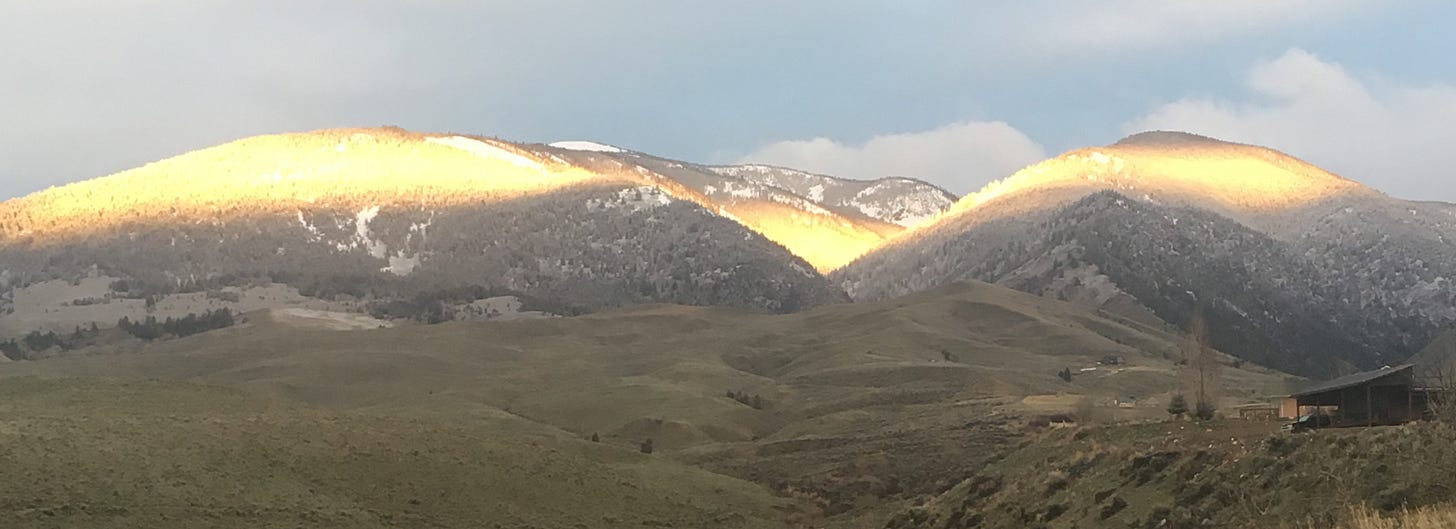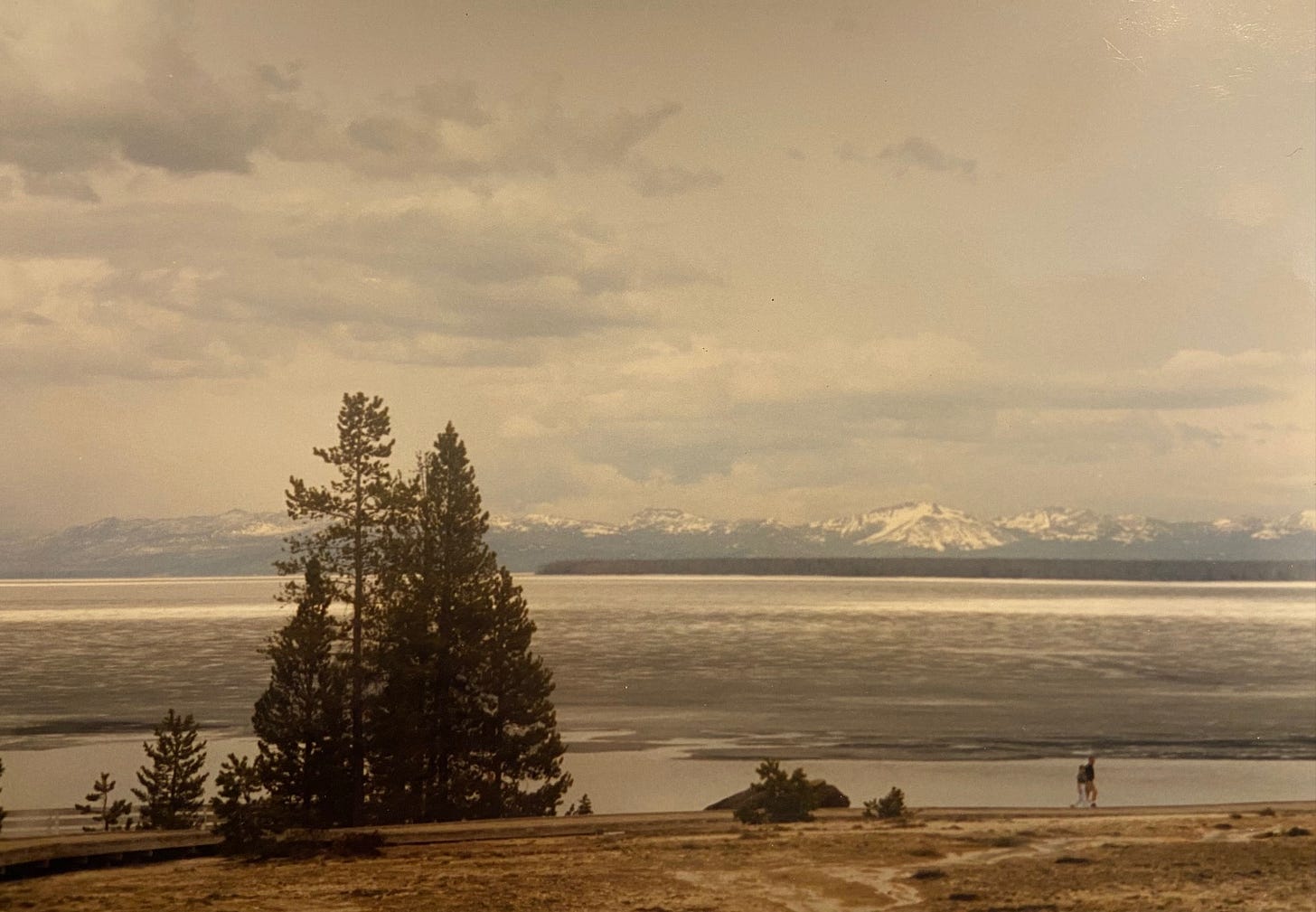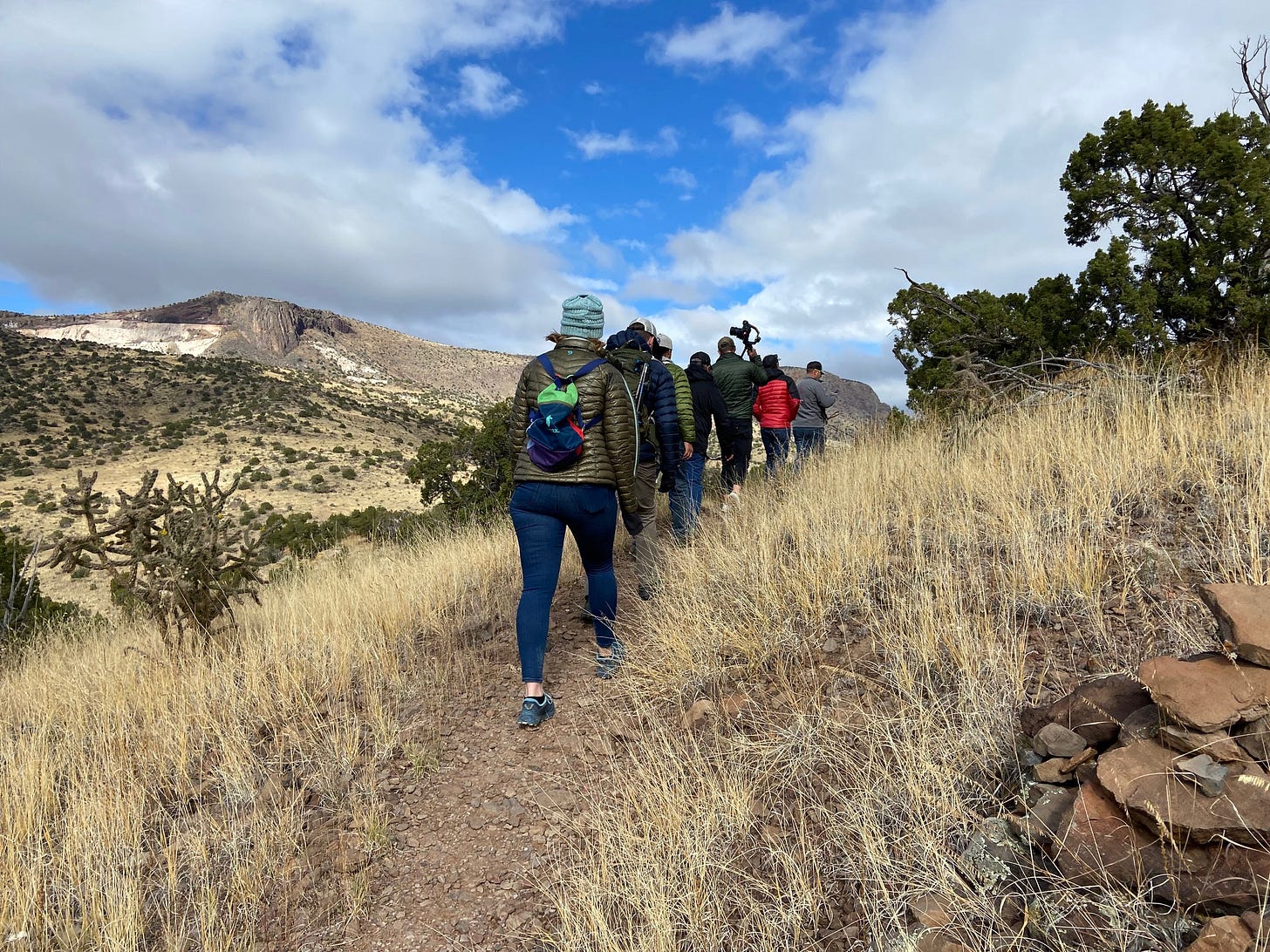Landscape Thinking on the Continental Divide
The wide-angle lens that fosters stewardship and connection
A few years ago, I was invited to serve on the board of the Continental Divide Trail Coalition (CDTC). I felt a bit unsure about my qualifications to represent a trail that’s 1,500 miles from home at its nearest point. Even so, I wanted to say yes. Executive Director Teresa Martinez and CDTC’s other founders have built an incredible organization and it’s one I wanted to be part of. I joined with the hopes that I could contribute to CDTC’s Gateway Community program.
The Continental Divide Trail (CDT) is the most remote of the 11 National Scenic Trails in the U.S. It stretches 3,000 miles from Canada to Mexico, following the Great Continental Divide of the Americas through New Mexico, Colorado, Wyoming, Idaho, and Montana. Rainfall to the west of the divide drains to the Pacific Ocean, and to the east into the Atlantic. The CDT is one of the most known “long trails.” Most backpackers attempting a “triple crown” hike the length of the Appalachian Trail, Pacific Crest Trail, and the CDT. Of course, with all long-distance trails, most people who ever put their feet on the path hike shorter portions, going out a few days or hours at a time.
I’m now in my third year on the board. Much of that time, the question about my connection to the CDT lingered in the back of my mind. The reality is I’m a heck of a lot closer to the Eastern Continental Divide, about 90 miles from my home in Pittsburgh. But I think I finally know the answer concerning my connection to the trail. My shift in understanding occurred when I started to take a landscape view of the CDT. Those who enjoy photography know that a wide-angle lens widens the field of view. It’s the same with “landscape thinking.” When we think in terms of landscapes, we’re able to take into account the big picture: the land, waterways, built communities, culture, and heritage of a place. It’s zooming out and considering the trail and its surroundings, not just the path.
In this view, I’ve cared about the Continental Divide landscape long before I ever heard of the trail.
I’m thinking about the first time I saw the Rocky Mountains in May 1999. Two days after college graduation, a friend and I took her mom’s minivan across the U.S. We got our first glimpse of the Front Range on our way to Colorado Springs. I was smitten by the snow-capped Rockies. We took the trip to fulfill our wanderlust and hopes for self-discovery (I thought I would “find myself” on a three-week road trip). But seeing this part of Colorado carried a familial significance as well. My granddad was stationed in the area during World War II. In fact, my grandma took a train out to marry him on his base in Pueblo. Years later, they would road trip out West, revisiting the landscape with their sons in tow. Grandma snapped a moody photo of the Grand Tetons (very near the CDT). I can’t tell you how many times I stood in their living room staring at that photo.
As for our trip, our next stops were to Mesa Verde National Park and Four Corners National Monument, where I recall having my first experiences learning about and interacting with indigenous cultures. It was the beginning of a long journey of learning about Native lands and peoples, most of them having had their place in the landscape reduced against their will. The learning continues.
We continued south (to the Grand Canyon) and west (to the California coast). We passed through Nevada and then Idaho, where I wrote of its “majestic hills and mountains.” In Yellowstone National Park, we experienced the wonder of geysers, mudpots, and hot springs. We drove along Yellowstone Lake, still covered in ice at the end of May. A couple of years later, a trip out West included one of THE BEST mountain hikes in the San Juan Mountains. I remember everything being so green in the mountains. These experiences of my early twenties comprised my earliest interactions with the CDT landscape.
Years later, in 2017, I was back in Idaho to assist with a Citizens’ Institute on Rural Design workshop in Salmon (a CDT Gateway Community). I flew into Boise and climbed into a four-seat plane with a couple of my co-presenters. I sat next to the pilot, who wore jeans and kept his flight plan on a clip board next to my legs. We flew over the Boise National Forest and Salmon-Challis National Forest. It was so staggeringly beautiful. I remember wondering “How can this be my life?” In Salmon, I was captivated by the Salmon River and surrounding mountains, and even more so by the people I got to know while there. (Here’s my trip album.)
A year later, I traveled to Denver for a Bicycle Colorado conference. I took a side trip to Rocky Mountain National Park (RMNP) and watched a couple of brave souls walk across a frozen lake before following in their footsteps. Little did I know on that crisp winter day that the CDT comes through RMNP or that I would be serving on the board just a few years later.
In 2019, the New Mexico Outdoor Economics Conference (where I first met Teresa) brought me to the state for the first time in nearly 20 years. Held in Silver City (the first designated CDT Gateway Community), the conference gave me to the opportunity to go on a field trip to the Gila National Forest, where we visited Thirteenth Century cliff dwellings that were inhabited by the Mogollon culture.
I took my first CDTC board trip a few years later in 2022. My wife and I followed a group of staff and agency partners to visit the trail in Cuba, New Mexico. This, I believed, was my first time stepping foot on the CDT. In retrospect, that seems such a narrow view, knowing the CDT passes through or near so many of the places I explored over the last two decades. Nevertheless, the visit mattered to me. I wanted to experience the trail and Cuba (another CDT Gateway Community). We also drove to Abiquiu and learned about Georgia O’Keeffe’s life and career in the Land of Enchantment.
On my next trip out (last fall), CDTC’s Corey Torivio took me to the town of Grants, also a Gateway Community, for a video shoot he’d organized. I got to walk part of the CDT again! Much more special, though, was that Corey included me on a visit to see Acoma Pueblo. A member of the Acoma community, Corey gave us a special inside look at a sacred place. The views were unparalleled. The opportunity to share and learn from Corey was, too.
This brings me to March 2023, when the CDTC board and staff met in Golden, Colorado. I decided to drive from Tucson to Golden over three days. My plan was to see as many CDT communities as possible. In the end, I rerouted due to winter weather and saw just a few. I visited Pie Town, where I was the only customer at the only open eatery, Does and Bucks. The owner gave up his seat next to the wood stove for me. That’s hospitality! I then embarked on one of the most white-knuckled of white-knuckle drives to Grants. The next day, my reroute landed me in Santa Fe (a great Plan B!). From there, I drove through Carson National Forest, where I stood on the front porch of Aldo Leopold’s cabin. With no one in sight and hare tracks dotting the snowy field, I felt I’d stumbled upon a special place. I then crossed into Colorado, spent some time in Salida, a bustling mountain town and CDT Gateway Community, before departing for CDTC’s headquarters in Golden. (Here are some photos from that trip and others.)
The Rocky Mountains is a landscape that I know so little about. But it’s a place I feel connected to (it only takes one visit). It’s one I’ve dreamt about and made my way to over the years. Each time it feels vast and new to me. It’s a region that I want to thrive. And it’s a landscape that’s at risk. If you visit the CDTC website, you’ll read that we believe the CDT is “one of the largest conservation efforts in the history of the United States.” To summarize the fine print: it’s more than a line on a map. The CDT is “a living connector of communities along the spine of North America, a thriving landscape of unique and precious ecosystems” and a meeting ground for people of all walks of life.
It’s about so much more than a trail. And, honestly, we can say the same of our other National Scenic Trails (I’ve got to send love to the Appalachian Trail, North Country Trail, and Potomac Heritage Trail, my close to home NSTs).
If you’ve never hiked the CDT but have been to Glacier National Park, Yellowstone, Rocky Mountain National Park, or any of National Forests, communities, or Native lands along the divide, you’ve been to the CDT landscape. You just might care about the landscape (hopefully you do). This is where I invite you to share your Continental Divide stories in the comments and, if you are so compelled, to contribute to the CDTC’s spring membership campaign. The campaign runs through May 21 and includes some fun giveaways. I didn’t write this post because of the campaign. But the timing is right to include the appeal and encourage you to help protect the trail and landscape. Learn more here.
Gratitude Note
I’m so grateful to Teresa and the entire staff and board at the Continental Divide Trail Coalition for the values-driven work that they (we) do. I’m constantly learning from one of the most forward-thinking trail organizations I’ve ever encountered.










Absolutely lovely post friend! so many similar feelings for me as a child about the majestic Rocky Mountains, and still smitten everyday I look at them. True sense of place for me! Bring da wifey out for you next visit to Colorado, would love to show you all around Salida/BV a bit more. Always welcome in my nome Amy. Be safe, drink more water.
The way you talk about my childhood state, CO, always makes me a smidge homesick. Even though I’m more home in Western PA than I ever was there. Im so glad that trail has you as a voice.